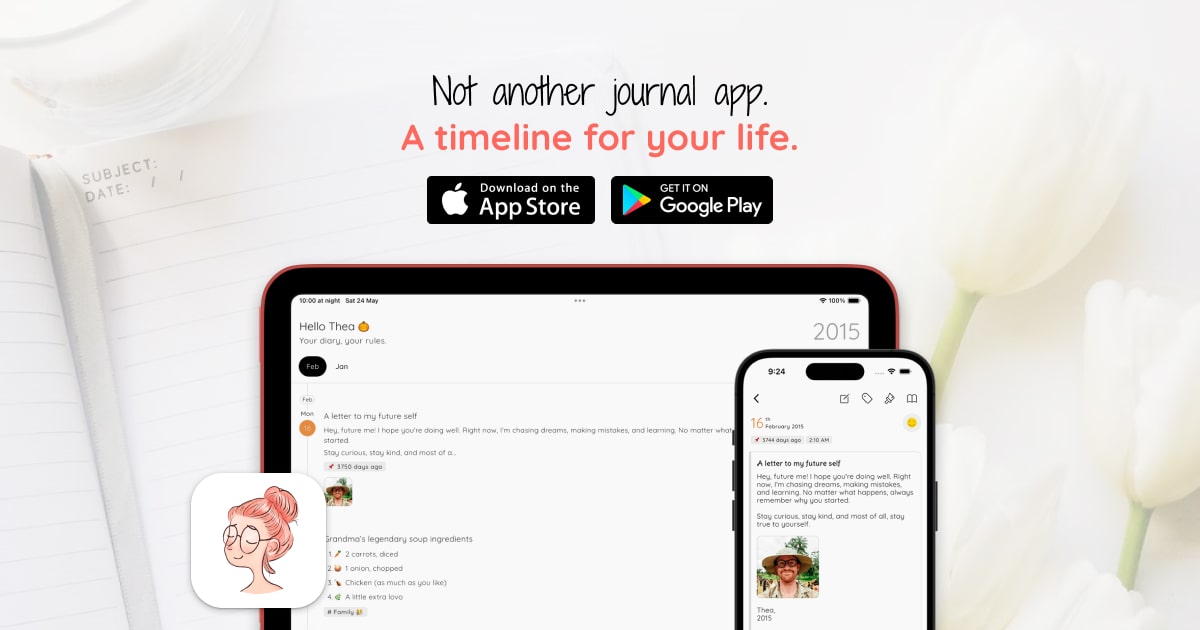I’ve always thought everyone’s got a story worth telling-your life, with all its ups, downs, and in-betweens, is like a book only you can write. But sitting down to write your life story? That can feel overwhelming. Where do you start? What’s worth including? Over the years, I’ve jotted down bits of my own story-some in old notebooks, some on my phone-and I’ve learned it’s less about perfection and more about just getting it out.
Here’s a straightforward guide to help you write your life story, plus a look at how my app, StoryPad, can make it easier and more meaningful. This is crafted for my website’s SEO to draw in readers and showcase StoryPad’s magic.
Why Write Your Life Story?
Your life story isn’t just a timeline of events-it’s a way to make sense of who you are, share your journey, or leave something behind for others. For me, writing about my life has helped me spot patterns, laugh at old mistakes, and appreciate the small moments. Whether you’re writing for yourself, your family, or a wider audience, it’s a chance to reflect, connect, and create something that’s uniquely you. Plus, it’s pretty cool to think someone might read it one day and feel like they know you.
6 Steps to Write Your Life Story
1. Start Where You Are
You don’t need to begin with “I was born on…”-start wherever feels right. Maybe it’s a memory that’s stuck with you, like the summer I spent biking around my hometown, or a big moment, like a move or a loss. Jot down whatever comes to mind, even if it’s messy. You can organize it later. The key is to get words on the page and let your story unfold naturally.
Tip: Write down one memory right now. It could be five sentences or five words-just start.
2. Pick Key Moments, Not Every Detail
Your life story doesn’t need to cover every single day. Focus on the moments that shaped you-first loves, tough choices, proud wins, or even quiet times that hit deep. I once wrote about a random road trip that changed how I saw myself, and it ended up being the heart of my story. Think about what stands out: What made you laugh, cry, or grow? Those are your anchors.
Tip: Make a list of 5–10 moments that feel big. Don’t worry about order yet.
3. Find Your Voice
Write like you talk. If you’re funny, let that shine. If you’re thoughtful, lean into it. My early attempts at writing my story sounded like a history report-boring! Then I started writing like I was telling a friend, and it felt real. Don’t try to sound “fancy” or like someone else. Your voice is what makes your story yours.
Tip: Try writing a paragraph as if you’re chatting with someone you trust. Read it out loud-does it sound like you?
4. Use a Timeline to Stay Organized
A loose structure helps keep your story from feeling like a jumble. I like to sketch a timeline of my life-key ages, places, or events-and then fill in the gaps with memories. You don’t have to stick to chronological order, but having a backbone keeps things clear. For example, I might group stories by themes like “family” or “adventures” but note when they happened.
Tip: Grab a piece of paper and mark 5–10 big life events by year or age. Add a few words for each to jog your memory.
5. Add Color with Details and Emotions
Details bring your story to life. Instead of “I went to the beach,” try “I went to the beach, toes sinking in warm sand, with the salty breeze tangling my hair.” Emotions matter too-how did it feel? When I wrote about moving to a new city, I didn’t just list what happened; I wrote about the mix of excitement and nerves that kept me up at night. That’s what makes readers feel like they’re there.
Tip: For one memory, write down 2–3 sensory details (sights, sounds, smells) and how you felt.
6. Keep Going, Even If It’s Hard
Writing your life story can stir up big feelings-joy, regret, or even grief. That’s okay. Some of my toughest moments, like losing a friend, were the hardest to write but meant the most. If you get stuck, write about why it’s tough. And don’t aim for a masterpiece-just aim to be honest. You can always edit later.
Tip: Set a timer for 10 minutes and write without stopping. Doesn’t matter what comes out-just keep moving.
Making It Yours
Your life story doesn’t have to be a book. It could be a collection of short stories, a letter to your kids, or even a mix of words and photos. There’s no “right” way. I’ve got bits of my story scattered across journals, some just a few lines, others pages long. What matters is that it feels true to you.
Meet StoryPad: Your Life, Your Story

Curious how StoryPad can help you? Visit storypad.me for a quick 2-minute pitch that shows why StoryPad is the perfect tool to tell your story.
Final Thoughts
Writing your life story is about more than just dates and events-it’s about capturing what makes you, you. Start small, focus on the moments that matter, and let your voice shine. With StoryPad, you’ve got a tool that makes it easy to weave your memories into a story that’s yours alone. So grab a quiet moment, open the app, and start writing. Your life’s worth it.
